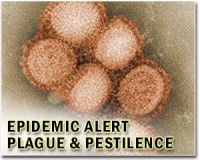| . |  |
. |
Vienna (AFP) July 20, 2010 The world AIDS forum set aside rows about politics and funding on Tuesday, as delegates cheered South African scientists who announced a breakthrough in the quest for a vaginal cream to protect women from HIV. In a packed hall in Vienna, researchers, policymakers and activists gave three standing ovations to a presentation of trial data that some hailed as a landmark in the 29-year war on AIDS. Several hundred others watched from a spillover room. The prototype is the first microbicide gel to offer a strong degree of protection against the human immunodeficiency virus (HIV). The South African team unveiled results, published the day before in the US journal Science, from the second phase of a three-stage trial. If confirmed, the work will open up a new front in a war that has destroyed more than 25 million lives and cast a dark shadow over 33 million people infected by HIV. "We are all very excited by the results," Anthony Fauci, director of the US National Institute of Allergy and Infectious Diseases (NIAID), told a press conference. "This is the first time that there has been an unequivocally significant demonstration of the ability to block (HIV) acquisition in women by a microbicide." Further scrutiny is needed of the gel's safety and effectiveness before it can be released to the public, a process that typically takes several years, experts cautioned. Questions remain about whether its level of protection is good enough or should be boosted, and how the product would perform outside the tightly-controlled conditions of a pharmaceutical trial. But if these obstacles are overcome, a weapon of mighty proportions could emerge. It would add to the tiny arsenal of options for preventing the spread of HIV. And it would empower women, especially in sub-Saharan Africa, facing coercive sex from an infected partner who refuses to wear a condom. "If we implemented the gel in a way similar to the trial we could prevent 1.3 million new infections and 800,000 deaths in South Africa alone over the next 20 years," said Salim Abdool Karim of the Centre for the AIDS Programme of Research in South Africa, or CAPRISA, who co-led the research with his wife, Quarraisha. "This is good news for women, good news for the field, and a good day for science," Yasmin Halima, director of the Global Campaign for Microbicides, said. The gel was tested under tight ethical guidelines among 889 women in urban and rural South Africa, who were HIV-free at the start of the project. Half the women received the cream -- the first microbicide to contain an antiretroviral drug commonly used to treat HIV-infected people -- while the others used a placebo, a harmless but non-active lookalike. Using the gel reduced the risk of HIV infection by 39 percent overall, but for women who used the cream most consistently the protection was 54 percent. The formula was also safe, easing a major worry in microbicide research, where two previous trials catastrophically boosted the risk of infection. Jean-Francois Delfraissy, executive director of France's National Agency for AIDS Research (ANRS), said the work was "one of the greatest trials in the history of HIV". Even so, there remained no "magic bullet" on prevention, but a panoply of methods, including safe sex and male circumcision, he told AFP. The microbicide was not tested in anal intercourse, where statistical studies suggest the infection risk can be 10 times higher than for vaginal sex, Ward Cates, president of research at Family Health International (FHI), a major US NGOs, told AFP. More than two-thirds of people with HIV live in sub-Saharan Africa. In this region, 60 percent of new infections occur among women and girls. The 18th International AIDS Conference, a six-day event running until Friday, was soured in opening debates over a slump in funding, triggered by the economic recession. Activists rowdily accused President Barack Obama of reneging on AIDS pledges, prompting his predecessor, Bill Clinton, to mount a defence of the White House incumbent and urge campaigners to squeeze every dollar at a time of belt-tightening.
Share This Article With Planet Earth
Related Links Epidemics on Earth - Bird Flu, HIV/AIDS, Ebola
 Haitians with AIDS hit by broken promises of aid
Haitians with AIDS hit by broken promises of aidVienna (AFP) July 20, 2010 As Haiti struggles to rebuild itself after a devastating earthquake, people with AIDS are still waiting for aid promised to them before the catastrophe, activists here said Tuesday. There are some 120,000 people with the human immunodeficiency virus or HIV in Haiti, which was hit by a huge earthquake on January 12, killing 250,000 people and leaving 1.5 million homeless. An internationa ... read more |
|
| The content herein, unless otherwise known to be public domain, are Copyright 1995-2010 - SpaceDaily. AFP and UPI Wire Stories are copyright Agence France-Presse and United Press International. ESA Portal Reports are copyright European Space Agency. All NASA sourced material is public domain. Additional copyrights may apply in whole or part to other bona fide parties. Advertising does not imply endorsement,agreement or approval of any opinions, statements or information provided by SpaceDaily on any Web page published or hosted by SpaceDaily. Privacy Statement |